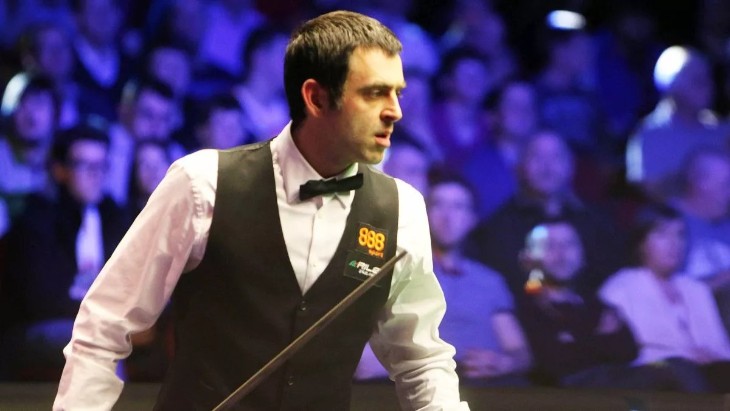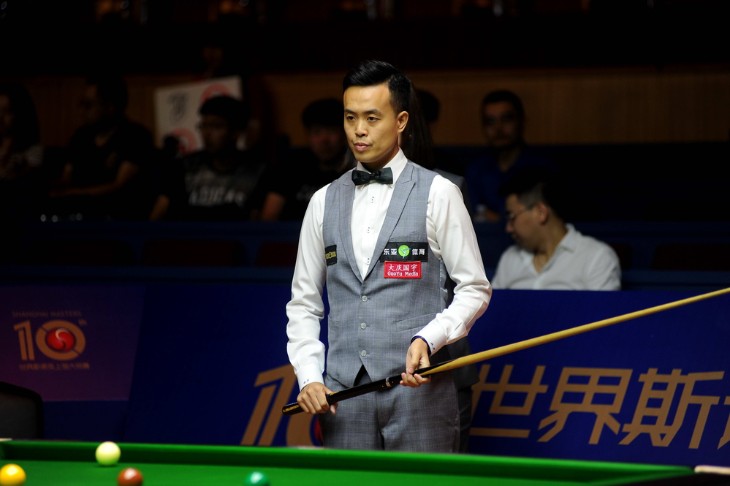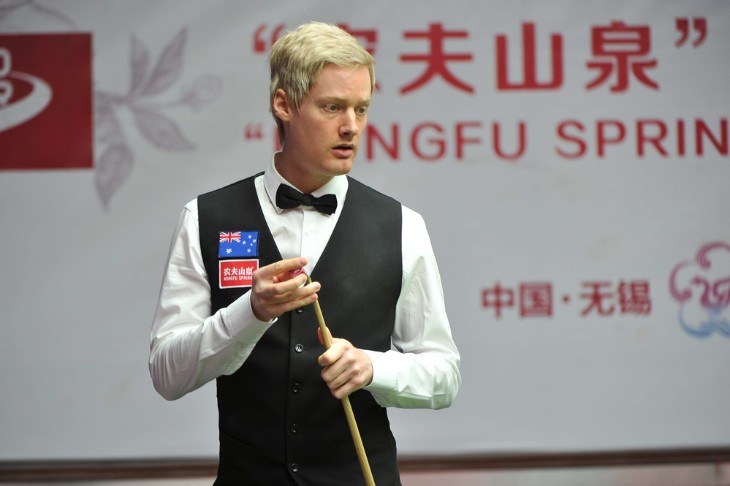- The Beginnings of Formality in Snooker
- The 1920s-1950s: Stiff Collars to Bow Ties
- A New Era of Color Television
- The 1980s; The flamboyance of the Matchroom Mob
- Modernisation and Relaxation in the 2000s
- Themed Tournaments and Casual Attire
- The Role of Dress Code in Professionalism and Sponsorship
- Bottom Line
Snooker, an ancient game and an integral part of British culture, has always displayed craftiness and accuracy and a show of fashion and behaviour. The dress code has always been significant to snooker, changing over time with societal norms in fashion and the development of the sport itself. Such evolution has made snooker gain global credibility, transforming it from a local hobby.
The Beginnings of Formality in Snooker
The origins of snooker's formal dress code date back to the late 19th century. British Army officers played this game in its beginning stages, leading to strict formal attire. For instance, standard garments for playing snooker then included tailcoats with stiff collars and typical Victorian or Edwardian clothing styles. This was about looking good and showing some reverence for the game and what it represented.
As a result, maintaining high levels of dress became even more significant when more and more people joined snooker clubs. Respectable people visited these clubs to relax and play games. Wearing suits during these times kept the ambience proper and dignified. It also distinguished snooker from other informal sports, making it appear sophisticated and dignified.
This insistence on formality continued even after snooker had become professionalised. They were considered ambassadors for their sport; smartly dressed players improved their image as disciplined, hard working athletes. This is how the gentleman’s perception came up about the ‘gentleman’s game’ in Snookers’ case, which still affects how modern people perceive it.
Thus, where did these rules come from? The source lies deep within its history, where we can find roots both in military officers' pastime and the Champions League lifestyle during early times. The early players’ formal clothes built a foundation that has changed over time but still respects the game’s dignity.
The 1920s-1950s: Stiff Collars to Bow Ties
From the 1920s to the mid-fifties, Snooker experienced a shift in its dress code from stiff collars or waistcoats in the Victorian and Edwardian eras to modern elements like bow ties and waistcoats. This was aimed at changing fashion and making it less uncomfortable for players during play, although maintaining formality.
At this point, snooker was becoming more popular in public halls instead of traditional private environments. As the number of spectators grew, players’ looks became increasingly important. In addition, bow ties and waistcoats provided an alternative option for players who wanted to retain neatness and professionalism while giving up the previous tailcoats with stiff collars.
These adjustments also came at a period when snooker was becoming more attractive as a spectator sport. Consequently, participants became partial performers, too. This newer dress code remained elegant but offered greater mobility to allow for better movement and playing by lowering one’s body, improving players' performance levels; however, it is still good enough to preserve snooker's image as an advanced and severe match between competitors.
The era was heralded by changes that led to the current dress code in professional snooker, which is a balance between comfort and formality. The sport started changing its traditional stiff and formal attire to meet both players’ and supporters’ wants and expectations. This change was crucial for the game as it sought to enter the television age, where visuals counted more than anything else, including player comfort.

A New Era of Color Television
- Colour TV Introduction: The 1960s saw the advent of colour television, which marked a significant turning point for snooker. It was the first time people could watch snooker in colour, leaving the game’s visual aspects more important than ever before. It encouraged players to wear more colourful and visually appealing outfits.
- Impact on Player Attire: With coloured broadcasts, snooker players started putting on waistcoats and ties of various colours. This move was about personal style and improved every viewer’s experience. Brighter clothes with patterns helped distinguish the players when watched on screen, making games much more engaging.
- Enhancing the Sport's Appeal: Colourful player costumes helped increase snooker's appeal to a broader audience range. As many people followed snooker matches through television, it increased its popularity as a sport. The colourful costumes made it look beautiful and kept viewers watching even during long matches.
- Setting the Stage for Modern Snooker: It prepared the groundwork for modernising snooker. Snooker adjusted to these transitions in media by embracing television and what is required. This adaption became vital for this sport’s development since snookered moved from being a need to have something played on computer screens worldwide, thus increasing the fan base, and transforming it into professional sports status.
The introduction of colour television changed everything about snooker, from how players dress to how globally popular this sport is today. Snooker is not just a game that you are supposed to play but also a very interesting show that millions of individuals all over the world enjoy watching with pleasure.
The 1980s; The flamboyance of the Matchroom Mob
In the 1980s, snooker took on a new dimension with the emergence of a group of prominent players known as the ‘Matchroom Mob’, who brought elements of charisma and flamboyance into the game. This group included Steve Davis and Jimmy White, renowned for playing stylishly.
During this period, snooker clothing became trendier and brighter. The snooker halls were invaded by men from the Matchroom mob dressed in stylish suits, flashy waistcoats, and silk ties that added some class to their game. Their trendy appearances made them stand out and contributed another dimension to the matches.
This era is also notable for popularising the game of snooker. With younger viewers included among larger audience groups, the Matchroom Mob made an excitingly fashionable appearance among those playing it. They did not just play snooker; they also used style and charisma to attract crowds at televised events.
Their effect on this sport extended beyond fashion trends alone. By embracing television and media, Matchroom Mob played a role in marketing snooker as a mainstream sporting activity. Their vibrant looks and captivating personalities made Snooker a spectator sport with significant television audiences and sponsors.
Therefore, the 1980s were an exhilarating chapter in snooker's history when the dress code evolved from formality to flamboyant chicness. This made snooker more visually captivating and helped establish it as a professional, globally recognised sport.
Modernisation and Relaxation in the 2000s
Snooker’s dress code in the 2000s changed significantly to Relaxation and modernisation. The game was physically demanding, sometimes involving long hours of play, and players needed to be comfortable, which brought about this change. Consequently, the rule makers had to lose control over how players should dress up.
This period saw the emergence of less rigid attire that allowed for more movement. Modern fabrics were used instead of traditional ones, providing better comfort and flexibility. For instance, player’s comfort during matches improved when lighter and more breathable materials became common.
Furthermore, there has been a change in the style of dressing. Players began appearing slightly less formal but still within the accepted limits. They made slight adjustments, allowing players to put on decent yet comfortable shoes, unlike before, when only smart ones were allowed. This helped those who played for long periods while standing because they needed shoes that could be supportive without causing any pain.
The changes in snooker between 2000 and 2010 were crucial for the growth of this game as a whole. These changes have enabled snooker to retain its traditions without compromising the needs of today’s athletes. Traditionalism versus a contemporary approach has shaped snooker into a relevant and appealing sport.

Themed Tournaments and Casual Attire
- Introduction of Themed Tournaments: Casual wear during themed tournaments in snooker adds a new twist to this game. In these events, players can do away with formal dresses by wearing their favourite clothes, making them much funnier than ever before. This results in laughter from both players and fans, leading to an exciting match for everyone.
- Casual Attire in Action: During activities like polo shirt games, where one might love playing comfortably trousered or even individualised outfits for particular parties, this casualness encourages them. Free enough movement during their performance makes them feel at ease. This also aims to attract youthful players and viewers who will not appreciate the game in its strictest presentation.
- Enhancing Viewer Engagement: The casual dress code at themed tournaments is crucial in attracting and retaining a diverse audience. The relaxed apparel creates the impression that the games are more entertaining than regular snooker matches, appealing to people who do not watch traditional snooker matches. It is a strategy to include many people in liking snooker, and it should be remembered that some sports have done this for quite some time.
- Balancing Tradition and Modernity: Though it may seem like a noticeable departure from traditional attire, these changes were made with great respect for the game’s heritage. To maintain the classic formal dress code, significant tournaments, including championships, still adhere to this, thus ensuring that snooker has remained true to its roots.
Themed tournaments and the introduction of casual attire have significantly impacted snooker, making it more inclusive and enjoyable. In terms of wardrobe choices, this transformation shows how the sport can embrace what is happening today without disrespecting what has been achieved.
The Role of Dress Code in Professionalism and Sponsorship
This is especially true for snooker’s dress code, which significantly impacts the sport’s professionalism and attracts sponsors. With the development of snooker, players’ clothing became a significant aspect of business and marketing in this sports industry. This change highlights how dress codes can affect perceptions and offer opportunities for forming commercial alliances.
However, intelligent formal wear is still used during significant tournaments, although various companies also brand it. In doing so, the commercial aspects of snooker are connected to tradition through players’ garments with sponsor brands incorporated in them. This upholds the game's classy and professional image while allowing sponsors to gain more exposure. This exposure is essential in securing and maintaining the financial support necessary for the game's survival and growth.
Besides, players' bright appearance enhances snooker’s overall image as a severe and respectable sport. This image helps attract audiences and ensures the game’s integrity and respect remain intact. They usually portray themselves as ambassadors wearing suits with ties who mirror the discipline and honour required by such games.
Therefore, strategic dress code use for sponsorship and professionalism has become a significant consideration in the snooker business. The gap between maintaining the traditional ethos of this kind of game and accepting modern commerce practices is bridged here. The dressing code's role in supporting its heritage and economic viability will continue to be central even as snooker expands worldwide. Such an approach safeguards the survival of a competitive event and spectators’ gathering sport that attracts different communities.
Bottom Line
This journey from military precision to today's colourful clothes shows how much everything has changed, leading to a global spectacle from the early days. The periods reflect changes in time but also strategically improve attractiveness towards sports. With time, the snooker's dress code will evolve since it should always strike a balance between traditional sports marketing in place and ever-changing audience interests.
For more information:




.webp)


 (1).webp)




















